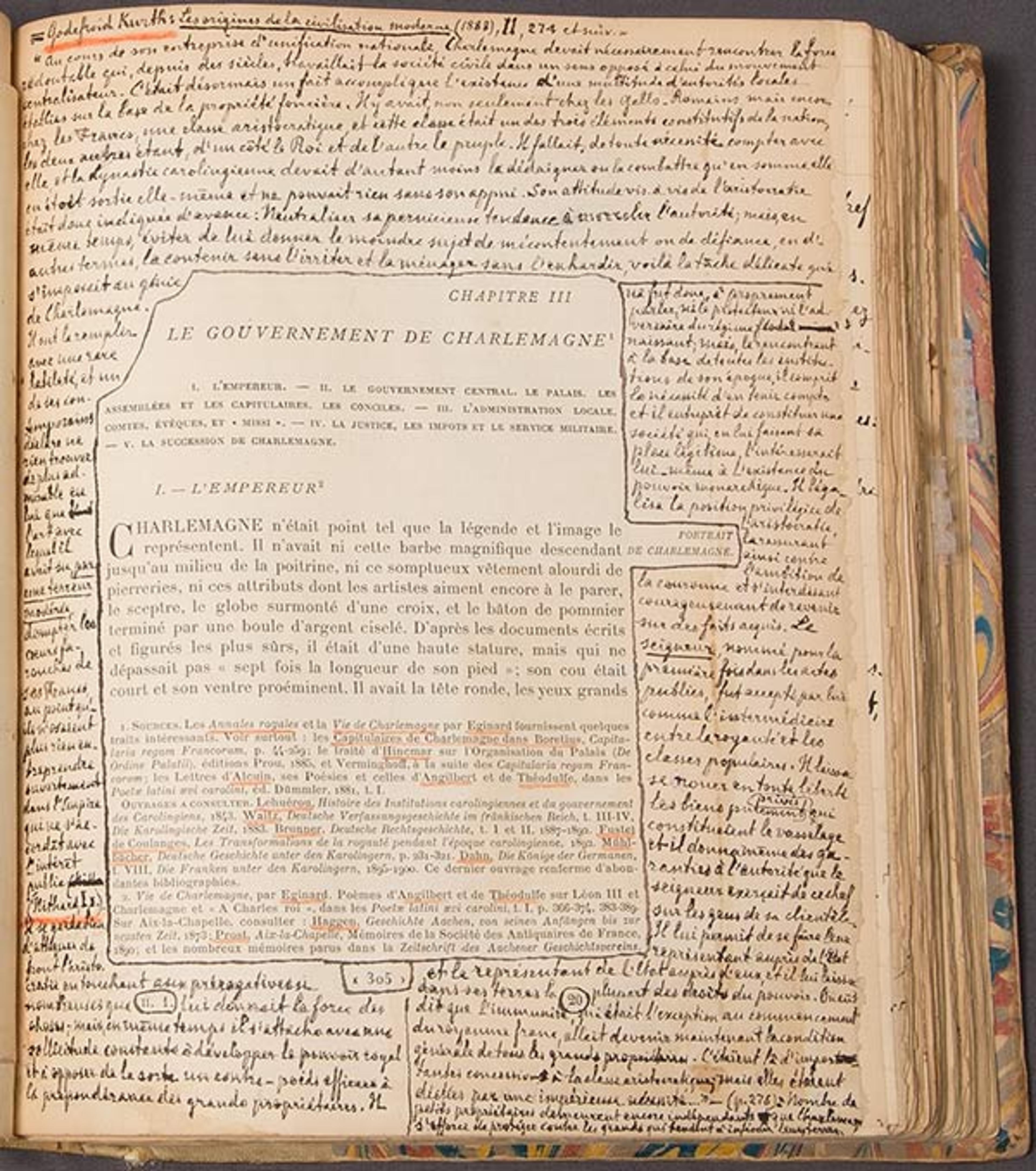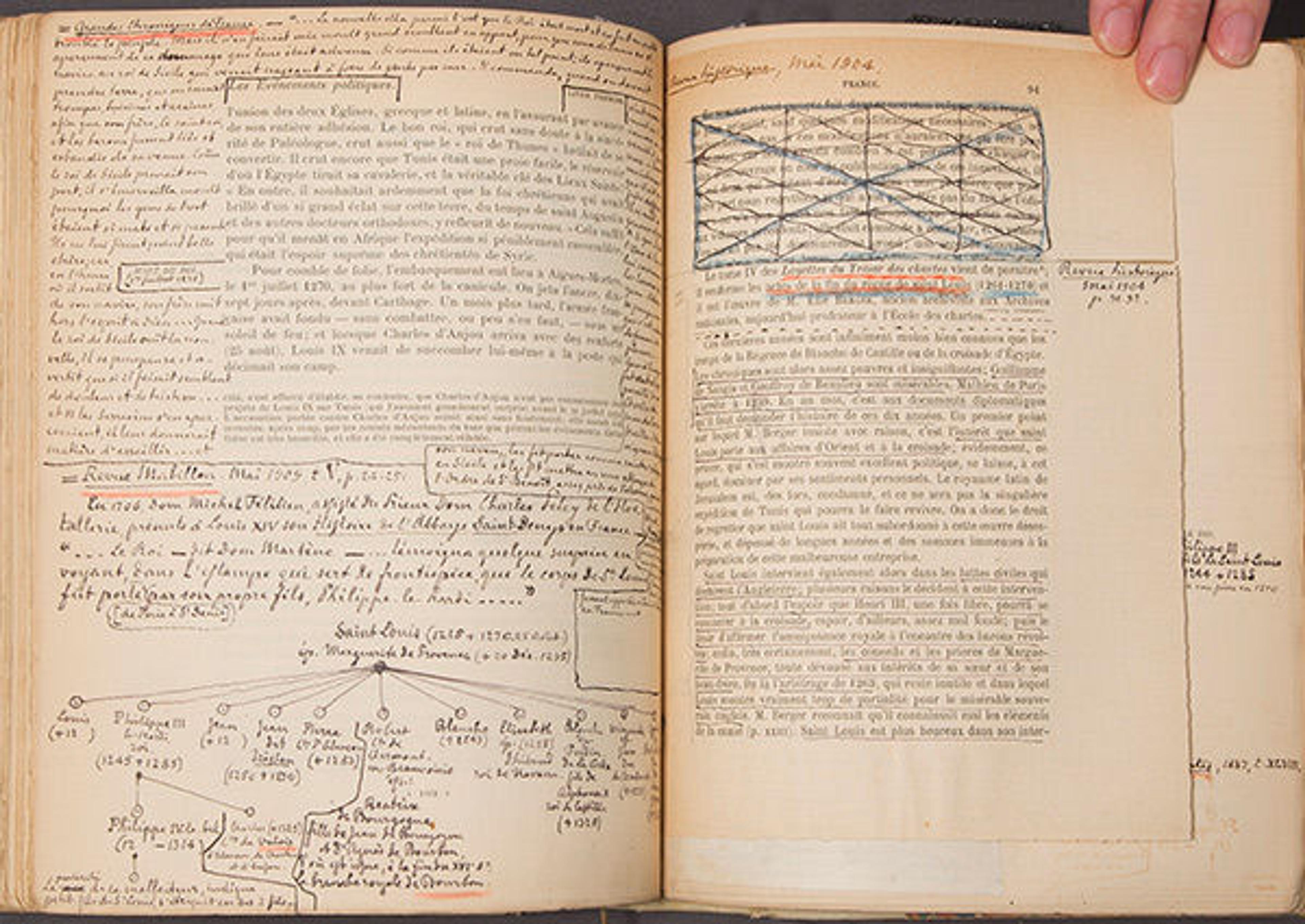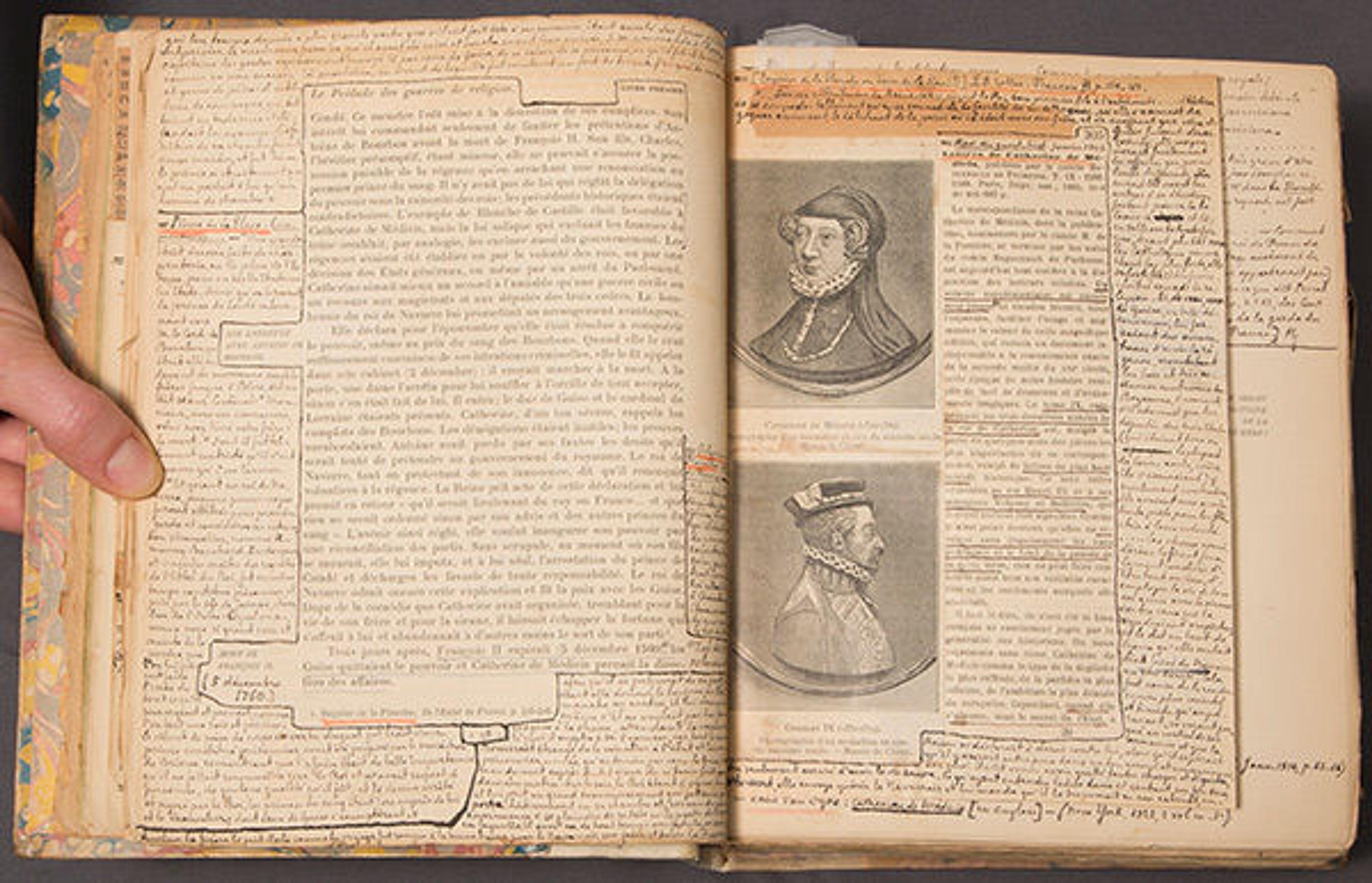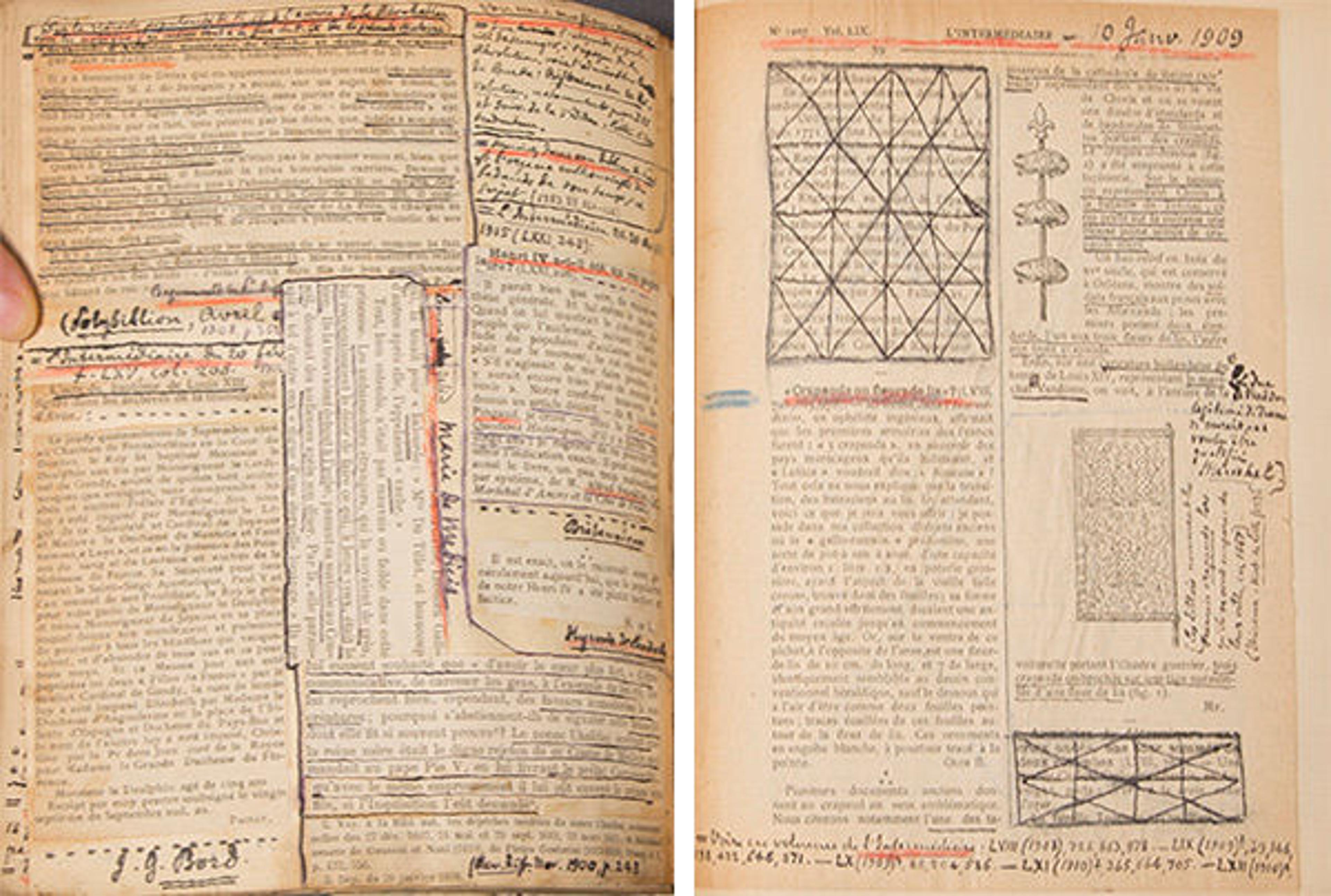
Lavisse, Ernest. Histoire de France depuis les origines jusqu'à la revolution. Paris: Hachette, 1900–1911
«It's hardly a secret that librarians strongly frown upon the idea of anyone scribbling away and leaving marks inside the books in our collections. However, there are instances where annotations and marginalia can shed light on the thought process of a work's previous owner. Notes and observations handwritten onto the pages of a book can tell us which titles in a personal library most compelled a historical figure, they can elaborate or clarify an author's feelings on a work she'd published years earlier, and they can illuminate what one great author found most notable in the work of another. Even a recent exhibition held at the New York Society Library focused exclusively on interesting annotated items from their collections.»
A rich example of the use of extensive, and very enthusiastic, marginalia is held at The Cloisters Library in three books from a nine-volume set entitled Histoire de France depuis les origines jusqu'à la revolution by Ernest Lavisse, published in 1903. We have no record of when or through whom these works were added to the collection, but at one point they had clearly been in the personal library of one Albert Hyrvoix de Landosle.
Born in Belgium, Hyrvoix de Landosle (1848–1931) was an editor and compiler of historical documents—predominantly correspondence of the period surrounding the French Revolution—and, as we can see from his treatment of our three volumes, a passionate annotator.

Photographs by Andrew Winslow. Hand model: Emma Wegner
It's clear that simply highlighting or underlining key passages wasn't enough for Hyrvoix de Landosle. Our three books are heavily populated not just with marks such as these but with marginalia of much greater commitment: sidebars and footnotes that were handwritten or pasted on; illustrations tipped in or added at the end of chapters; long passages from other sources; or even entire articles sandwiched between the pages, sometimes fully transcribed in multipage longhand.

Otherwise unillustrated, Hyrvoix de Landosle enthusiastically added images of notable figures and events clipped from other sources to his copy of Lavisse's work.

Printed material from other publications were pasted in. Here and in many other cases, non-germane passages are neatly X'ed out, perhaps to avoid distraction.
Clearly Hyrvoix de Landosle wouldn't take a book at face value and enjoyed the expansionary possibility of a published work, leaving, in this instance, a concrete record of the additional avenues he felt a text provided and a tangible demonstration of an engaged scholar's observations. And along the way, with his tiny but crisp handwriting and inspired use of available space, he transformed Lavisse's books into a suite that can be a real delight for the eyes.


While we really prefer that our readers don't subject books from the Met's libraries to this sort of treatment, we certainly hope that our collections can send researchers on the sorts of engaged intellectual wanderings (or even tangents) that are physically evident in the former holdings of M. Hyrvoix de Landosle.
